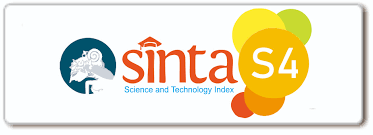Sexual Harassment in Eka Kurniawan’s Novel Lelaki Harimau
DOI:
10.47709/ijeal.v3i2.2760Keywords:
non-verbal sexual harassment, physical sexual harassment, verbal sexual harassment, psychology of literatureDimension Badge Record
Abstract
A reflection of social life with all its dynamics and problems could be expressed or pictured through a novel, a literary genre written based on social reality, the author’s experiences, observations, feelings and ideologies. Themes may be varied depending on the situational elements. Sexual harassment is one frequently exposed, and always discussed because such can occur anywhere and at any time and in this research becomes the focus of analysis. Sexual harassment is a crime that can harm other people or even cause trauma to victims and generally women are the most frequent victims due to the domination of men in the social life. The study is intended to reveal the problem of sexual harassment committed by the major characters in the novel Lelaki Harimau by Eka Kurniawan through a literary psychology approach as the behavior of the perpetrators of sexual harassment is related to personality structure. Psychology and literature are two interrelated disciplines; literary psychology uncovers the psychological aspects in literary works. Descriptive qualitative research method is applied for the whole study to analyze social phenomena without using mathematical calculations. The results of the research using the six data selected show that there are three forms of sexual harassment along the plot, verbal sexual harassment, non-verbal sexual harassment and physical sexual harassment.
Downloads
Abstract viewed = 167 times
Downloads
ARTICLE Published HISTORY
How to Cite
Issue
Section
License
Copyright (c) 2023 Muhammad Fatih Suhadi

This work is licensed under a Creative Commons Attribution-NonCommercial 4.0 International License.














